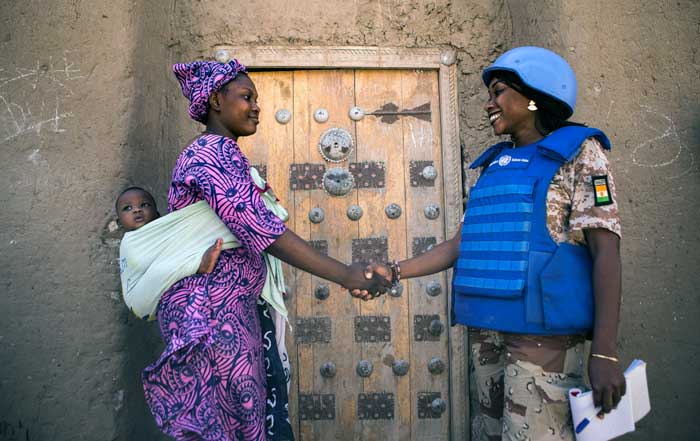The escalating challenges of climate change and plastic pollution represent the twin crises defining the twenty-first century. In 2025, as global temperatures rise at unprecedented rates and microplastics infiltrate even the most remote corners of the planet, humanity faces a defining moment that will determine not just the future of environmental sustainability, but the stability of global economies, societies, and ecosystems. Across continents—from the Arctic’s melting ice to the smog-filled skylines of Asia and the littered beaches of the Mediterranean—evidence of ecological strain is visible everywhere. This shared vulnerability has sparked a wave of collaborative action that transcends borders, uniting nations, corporations, scientists, and communities in a collective push toward sustainability.
The United Nations Environment Programme (UNEP), in its recent reports, underscores that without immediate global cooperation, the planet could exceed a 2°C temperature increase by mid-century. Such a rise would lead to irreversible climate impacts, including large-scale ecosystem collapse, food insecurity, and mass migration. In this interconnected landscape, the response from governments, non-profits, industries, and innovators defines not only environmental outcomes but also the ethical and economic character of modern civilization. On platforms such as worldsdoor.com/environment.html, these dialogues have become central to how society envisions a sustainable and resilient future.
International Collaboration: Shared Responsibility and Common Goals
The world’s response to climate change has matured into a dynamic web of international frameworks, agreements, and public-private initiatives. The Paris Agreement, signed by nearly every nation, remains the cornerstone of global climate governance, setting ambitious targets to limit global warming and foster adaptation. Yet, by 2025, it is clear that fulfilling these commitments requires much more than political pledges—it demands technological innovation, behavioral transformation, and unprecedented financial mobilization.
Organizations like the World Bank, World Economic Forum (WEF), and International Energy Agency (IEA) have all advanced cross-sectoral programs that tie environmental objectives to economic incentives. The European Green Deal, for example, has catalyzed policy integration across climate, agriculture, energy, and transport sectors, while ASEAN’s Regional Action Plan on Marine Litter represents a growing regional consensus in Asia to confront the plastic crisis. Global cooperation on these fronts aligns with the moral imperative articulated by the Intergovernmental Panel on Climate Change (IPCC)—that mitigation must be global, equitable, and inclusive.
To explore the human dimensions of these global shifts, readers can visit worldsdoor.com/world.html, which highlights how interconnected political, economic, and environmental priorities are shaping humanity’s collective response.
Corporate Responsibility and Market Transformation
Businesses have emerged as key players in the transition toward sustainability. Multinational corporations, once seen as major contributors to pollution, are now increasingly at the forefront of environmental reform. Through Environmental, Social, and Governance (ESG) commitments, companies like Unilever, Apple, Nestlé, and Microsoft are redesigning supply chains, adopting renewable energy, and investing in sustainable materials innovation.
The Ellen MacArthur Foundation, a global leader in promoting the circular economy, has partnered with dozens of corporations to eliminate plastic waste through recycling, reuse, and redesign strategies. Meanwhile, Google and Amazon have both accelerated carbon-neutral targets, integrating AI and data analytics to optimize energy efficiency in their global data centers. Learn more about how digital innovation supports environmental action through initiatives at worldsdoor.com/technology.html.
The rise of green finance—including green bonds, carbon trading systems, and sustainability-linked loans—is reshaping investment landscapes. According to Bloomberg Green, sustainable assets surpassed $40 trillion in 2024, signaling a market transformation that rewards environmental stewardship as a path to profitability. The convergence of ethical investing and profitability underscores an evolving paradigm: that sustainability is not a cost but a competitive advantage.
Innovation in Climate Technology
The technological frontier of climate action is rapidly expanding, driven by global innovation networks that combine research, entrepreneurship, and policy support. Advances in renewable energy, carbon capture, biodegradable materials, and AI-driven environmental monitoring have revolutionized how the world addresses pollution and carbon emissions.
Countries like Germany, Japan, and Denmark have become global leaders in clean energy research, while Singapore and South Korea have positioned themselves as pioneers in smart city sustainability. Companies such as Tesla, Vestas, and Siemens Gamesa continue to redefine renewable infrastructure through solar, wind, and energy storage breakthroughs.
Academic institutions including MIT, Imperial College London, and ETH Zurich have also contributed through groundbreaking research on decarbonization technologies and sustainable manufacturing. Meanwhile, startups are entering the field with innovations ranging from ocean-cleaning drones to AI-driven carbon footprint analytics, illustrating the creativity driving this global movement. To discover more about emerging technologies transforming the environment, visit worldsdoor.com/innovation.html.
Tackling Plastic Pollution at the Source
Plastic pollution has become one of the most pressing environmental issues of the decade. An estimated 400 million tons of plastic are produced each year, much of which ends up in oceans, rivers, and soils. By 2025, microplastics have been detected in human blood, Antarctic snow, and even the air, underscoring how deeply this synthetic material has permeated natural systems.
In response, collaborative initiatives such as the Global Plastics Treaty, led by the United Nations Environment Assembly (UNEA), are shaping a legally binding global framework to eliminate plastic waste. The Ocean Cleanup, a non-profit organization founded by Boyan Slat, continues to make strides in removing plastic from the Great Pacific Garbage Patch and major rivers across Asia and Africa. Governments are also enacting bans and incentives—Canada’s national single-use plastic ban, for instance, and the European Union’s Plastic Strategy—to curtail production and encourage circular alternatives.
Corporate engagement has also been pivotal. Coca-Cola, PepsiCo, and Procter & Gamble have launched extensive recycling partnerships and are exploring refillable and compostable packaging. The Alliance to End Plastic Waste, which includes over 60 companies, is investing billions into infrastructure and education projects to curb plastic leakage in developing economies. To explore how communities and businesses are addressing this issue locally and globally, readers can refer to worldsdoor.com/environment.html.
The Role of Education and Community Action
Beyond global treaties and corporate policies, the most profound changes often begin at the community level. Education has become a transformative tool for sustainability awareness and empowerment. Schools, universities, and grassroots organizations worldwide are fostering a new generation of climate-conscious citizens through experiential learning and civic engagement.
Initiatives like the UNESCO Global Action Programme on Education for Sustainable Development and Earth Day Network’s environmental literacy campaigns have strengthened public participation across continents. Local clean-up drives, zero-waste community markets, and educational platforms are reshaping the culture of consumption. The success of these efforts lies in their accessibility—showing that every action, no matter how small, contributes to a larger global impact.
Digital media and technology platforms, such as YouTube’s sustainability education series and Google Earth’s environmental storytelling, have made complex ecological data relatable and actionable for millions. To read more about how culture and education shape environmental consciousness, visit worldsdoor.com/education.html and worldsdoor.com/culture.html.
🌍 Global Climate Action Timeline 2025
Key International Initiatives Combating Climate Change & Plastic Pollution
Regional Leadership and Global Cooperation
Europe: A Model for Policy Integration
Europe continues to stand as a model of environmental leadership in 2025. Through the European Green Deal, the continent has aligned economic recovery with ecological renewal, channeling over €1 trillion into green infrastructure, renewable energy, and biodiversity protection. Nations such as Germany, Sweden, and Denmark have become carbon-reduction exemplars, combining fiscal discipline with innovation-led growth.
The European Union (EU) has also set ambitious targets to make Europe the world’s first climate-neutral continent by 2050. Its Fit for 55 legislative package aims to cut emissions by at least 55% by 2030, illustrating how coordinated regulation, technology investment, and public engagement can converge effectively. The European Investment Bank (EIB), now self-styled as a climate bank, provides financing for sustainable projects in both EU and developing economies. Such approaches demonstrate how comprehensive governance frameworks can foster not only sustainability but also long-term economic resilience.
For more insights into the intersection of sustainability and policy, readers can explore worldsdoor.com/business.html and worldsdoor.com/sustainable.html.
Asia-Pacific: Innovation and Adaptation
The Asia-Pacific region, home to some of the fastest-growing economies, has become an epicenter of environmental innovation and climate adaptation. China, now the world’s largest producer of renewable energy, has pledged carbon neutrality by 2060, while India continues to expand its solar capacity under the International Solar Alliance (ISA) initiative. Japan, South Korea, and Singapore are investing heavily in green hydrogen, offshore wind, and circular manufacturing systems.
In Southeast Asia, regional collaboration has intensified under frameworks like the ASEAN Agreement on Transboundary Haze Pollution and partnerships with the Asian Development Bank (ADB) to fund sustainable infrastructure. Thailand and Vietnam have become leaders in eco-tourism, showing how sustainable travel can balance conservation with local economic growth. Learn more about these evolving global tourism models at worldsdoor.com/travel.html.
These developments reflect Asia’s unique strength in combining government-backed industrial transformation with community-level environmental awareness. The integration of advanced technologies, such as IoT-based smart grids, AI-driven waste management, and electric mobility, signals a regional shift toward long-term resilience.
North America: Corporate Innovation and Climate Legislation
The United States and Canada have revitalized their environmental strategies under new public-private coalitions and legislative frameworks. The Inflation Reduction Act (IRA) continues to drive unprecedented investment in renewable energy, electric vehicles, and climate innovation across the United States. Meanwhile, Canada’s Clean Electricity Regulations and Zero Plastic Waste Strategy have set high benchmarks for other industrialized nations.
The growing influence of Silicon Valley’s clean tech sector—including companies such as Tesla, Beyond Meat, and NextEra Energy—demonstrates the capacity of entrepreneurship to complement policy. The U.S. is also expanding reforestation programs and coastal resilience initiatives in collaboration with global organizations like The Nature Conservancy and World Wildlife Fund (WWF).
These efforts signify a new alignment between technology-driven capitalism and environmental responsibility. To explore how global innovation hubs are addressing sustainability, visit worldsdoor.com/innovation.html.
Africa and Latin America: Frontlines of Climate Resilience
Africa and Latin America, despite contributing least to global emissions, remain among the most affected by climate change. Droughts, floods, and deforestation continue to challenge their ecosystems and economies. Yet, these regions are emerging as vital players in the pursuit of a sustainable planet.
In Africa, initiatives such as the Great Green Wall, supported by the African Union and UNCCD (United Nations Convention to Combat Desertification), aim to restore 100 million hectares of degraded land across the Sahel region. Similarly, Kenya’s investment in geothermal energy and South Africa’s Just Energy Transition Partnership (JETP) showcase how climate adaptation can drive social inclusion and employment.
In Latin America, Brazil has renewed commitments to protect the Amazon rainforest, reversing deforestation rates through stricter enforcement and partnerships with indigenous communities. Chile and Colombia have positioned themselves as leaders in renewable energy, particularly solar and hydropower. The collaboration between governments, NGOs, and local populations demonstrates that environmental protection is not merely an economic choice—it is an ethical and existential imperative. Learn more about community-driven conservation at worldsdoor.com/society.html.
The Human Cost and Cultural Awakening
Environmental Health and Social Justice
The intersection of environmental degradation and human health has become increasingly apparent. Air pollution alone is responsible for millions of premature deaths annually, while contaminated water and food chains due to plastic and chemical pollution have worsened global health inequalities. The World Health Organization (WHO) and UNICEF have repeatedly emphasized that the environmental crisis is also a humanitarian crisis.
Environmental justice movements, from Fridays for Future led by Greta Thunberg to indigenous-led coalitions in the Amazon and Arctic, have reframed climate action as a matter of equity and survival. These movements emphasize that sustainability is not just about preserving ecosystems—it is about preserving dignity, fairness, and the right to live in a healthy environment. Readers can delve deeper into global health and environmental correlations at worldsdoor.com/health.html.
Shifts in Culture and Lifestyle
A parallel cultural transformation has unfolded alongside policy and innovation. Around the world, consumers are making more conscious choices, favoring sustainable products, local sourcing, and ethical brands. Movements promoting plant-based diets, minimalism, and eco-conscious fashion have expanded from niche to mainstream.
The cultural impact of sustainability extends beyond consumption—it influences art, architecture, and even entertainment. Documentary films, literature, and digital media are shaping public narratives about humanity’s relationship with nature. Festivals and exhibitions dedicated to climate art, such as COP Art Pavilion and EarthX Film Festival, are inspiring new generations to view sustainability not as sacrifice but as creative expression. For cultural perspectives on the environment, explore worldsdoor.com/lifestyle.html and worldsdoor.com/culture.html.
Sustainable Cities, Food Systems, and Ethical Innovation
Building Sustainable Urban Futures
As urbanization accelerates, cities have become ground zero for both environmental challenges and innovative climate solutions. By 2025, over 60% of the global population resides in urban areas, consuming 78% of the world’s energy and producing more than 70% of carbon emissions. To counter these staggering figures, the concept of sustainable cities has evolved from a theoretical ideal into a global planning priority.
Projects like C40 Cities Climate Leadership Group and ICLEI – Local Governments for Sustainability unite metropolitan regions in adopting cleaner transportation, green infrastructure, and waste reduction strategies. Cities such as Copenhagen, Singapore, and Vancouver are redefining what it means to live sustainably—through net-zero building designs, integrated bike and transit systems, and urban forests that enhance biodiversity and air quality.
Technological ecosystems also play a crucial role. The emergence of smart cities, where sensors monitor energy use, air pollution, and traffic flow in real time, demonstrates how digital tools can transform civic management. By combining data analytics with sustainable planning, cities are achieving not only environmental efficiency but also higher quality of life for residents. Readers interested in these technological intersections can explore worldsdoor.com/technology.html and worldsdoor.com/environment.html.
Sustainable Food Systems and the Fight Against Waste
Climate change and plastic pollution are inseparable from global food systems. Agriculture contributes roughly one-third of greenhouse gas emissions, and food waste accounts for nearly 10% of these. The shift toward sustainable, low-impact food production is therefore crucial to mitigating the climate crisis.
Initiatives such as The Sustainable Food Systems Programme under the UN One Planet Network, and innovations by companies like Impossible Foods and Oatly, showcase how plant-based and alternative protein industries are helping reduce reliance on resource-intensive animal farming. Furthermore, precision agriculture—using AI, drones, and remote sensors—has revolutionized water conservation and crop optimization, particularly in arid regions of Africa and the Middle East.
Governments and NGOs are also addressing food waste through redistribution programs and circular packaging systems. The European Food Banks Federation and Too Good To Go app have rescued millions of tons of surplus food from disposal, while Japan’s Food Loss Reduction Promotion Act has become a global benchmark for legislative leadership. Readers can explore related sustainable consumption stories at worldsdoor.com/food.html and worldsdoor.com/sustainable.html.
Ethical Innovation and the Circular Economy
A defining shift in 2025 is the rise of ethical innovation—technological and industrial progress guided by transparency, responsibility, and sustainability. The circular economy model, which replaces the linear “take, make, dispose” system, has become a central framework for global businesses. Through design thinking and renewable materials, companies are reimagining how products are created, used, and recycled.
Patagonia continues to set the ethical standard in fashion through its “repair, reuse, recycle” philosophy, while IKEA has introduced circular retail programs allowing customers to return and refurbish products. The Cradle to Cradle Certified™ initiative, supported by organizations like McDonough Innovation, ensures that materials in consumer goods can be safely cycled back into the economy without environmental harm.
Innovation ecosystems in Switzerland, Finland, and South Korea are also leading the charge, integrating sustainability into high-tech industries, from semiconductors to biotech. Ethical innovation not only enhances brand trust but also signals a future in which economic competitiveness aligns naturally with planetary stewardship. For more on ethical transformation, readers can visit worldsdoor.com/ethics.html.
The Intersection of Technology and Environmental Restoration
Artificial Intelligence for the Planet
Artificial intelligence has rapidly evolved into a strategic ally in combating climate change and pollution. Through machine learning, AI systems can forecast weather patterns, detect deforestation, optimize energy grids, and track illegal fishing or logging activities from satellite imagery.
Projects like Microsoft’s AI for Earth, Google Earth Engine, and IBM’s Green Horizon showcase how algorithms can transform environmental monitoring and policy decision-making. These systems allow governments and scientists to predict natural disasters, measure carbon fluxes, and identify hotspots of plastic accumulation in oceans. AI-driven optimization in logistics and transportation is also minimizing fuel consumption, while data-driven urban planning tools are guiding city resilience strategies.
Furthermore, generative AI is now being used to design sustainable materials and accelerate the discovery of carbon-capture compounds, enabling breakthroughs that could once take decades. Learn more about technological innovation for sustainability at worldsdoor.com/innovation.html.
Renewable Energy Revolution
The global shift toward renewable energy represents the backbone of sustainable development. By 2025, renewables account for nearly 40% of global electricity generation, driven by the exponential growth of solar, wind, hydropower, and green hydrogen technologies.
International Renewable Energy Agency (IRENA) reports that energy storage breakthroughs, particularly in solid-state batteries, are transforming grid stability and affordability. Offshore wind farms, like those developed by Ørsted and Equinor, are becoming major contributors to Europe’s power supply, while China’s solar megaprojects dominate Asia’s clean energy expansion.
Energy transition is also creating millions of new jobs worldwide, aligning climate action with economic opportunity. The International Labour Organization (ILO) predicts that green jobs could reach 24 million by 2030, strengthening both environmental and social sustainability. For insights into this evolving global energy landscape, readers can visit worldsdoor.com/business.html and worldsdoor.com/world.html.
Governance, Finance, and the Path to a Sustainable Global Economy
Global Governance and Environmental Diplomacy
The success of the global fight against climate change and plastic pollution depends heavily on international diplomacy and multilateral cooperation. Institutions such as the United Nations (UN), World Trade Organization (WTO), and Organisation for Economic Co-operation and Development (OECD) continue to serve as the backbone of environmental policy frameworks. The annual COP (Conference of the Parties) meetings under the UNFCCC (United Nations Framework Convention on Climate Change) remain the most significant platform for global negotiation, where nations renew their climate commitments and evaluate progress toward collective goals.
The COP29 session in 2024 set the tone for a decade of accountability, urging countries to update their Nationally Determined Contributions (NDCs) and enhance adaptation financing for vulnerable nations. By 2025, the global climate dialogue has evolved beyond emission targets to include broader issues of biodiversity, ocean health, and equitable resource distribution. The upcoming Global Plastics Treaty, expected to take effect in 2026, represents a groundbreaking international consensus to restrict virgin plastic production and impose responsibility across the supply chain.
Furthermore, South-South cooperation—partnerships between developing nations—is becoming a defining feature of modern environmental diplomacy. Through regional alliances such as the African Climate Summit, Pacific Islands Forum, and Mercosur Environmental Pact, developing countries are taking collective ownership of sustainability strategies. This growing global inclusivity strengthens the moral and political legitimacy of climate action and reflects humanity’s shared responsibility toward the planet. Readers can explore such global perspectives on governance and ethics at worldsdoor.com/ethics.html and worldsdoor.com/world.html.
Financing the Green Transition
One of the most critical challenges in implementing sustainability policies is financing. The World Bank, International Monetary Fund (IMF), and regional development banks have expanded their climate portfolios to support renewable energy, adaptation projects, and waste management systems. At the same time, private capital markets are witnessing an unprecedented rise in sustainable investments.
Green bonds, sustainability-linked loans, and carbon markets have emerged as powerful financial tools to accelerate environmental progress. According to Moody’s ESG Solutions, global green bond issuance surpassed $1.5 trillion in 2024, marking the fastest-growing asset class in financial history. Investors increasingly favor companies demonstrating transparent climate risk management, while sovereign wealth funds and pension managers are divesting from fossil fuels.
The Task Force on Climate-related Financial Disclosures (TCFD) and its successor, the International Sustainability Standards Board (ISSB), are enforcing transparency and accountability in financial reporting. This alignment between capital markets and sustainability objectives ensures that profit-driven institutions now actively contribute to solving environmental problems. For further insights on how finance drives environmental change, visit worldsdoor.com/business.html and worldsdoor.com/sustainable.html.
Responsible Consumption and the Circular Marketplace
In parallel with global policy and finance, consumer behavior has become a defining force in shaping sustainable markets. A growing segment of consumers—especially millennials and Gen Z—are consciously supporting companies with ethical supply chains and transparent sustainability goals. The rise of certification systems like B Corp, Fair Trade, and Rainforest Alliance has helped align purchasing decisions with environmental impact.
E-commerce platforms such as Etsy and Thrive Market, and retailers like IKEA and H&M, are incorporating carbon labeling and traceability tools that allow customers to understand a product’s ecological footprint. This shift toward transparency represents a cultural reawakening where sustainability and consumption coexist through informed choice rather than abstention.
At the same time, local and circular economies are flourishing. Small enterprises and community cooperatives are revitalizing traditional crafts, agriculture, and manufacturing with a focus on waste elimination and regional self-sufficiency. Readers interested in how lifestyle and commerce intersect within this new paradigm can visit worldsdoor.com/lifestyle.html.
Youth Movements and Grassroots Empowerment
Perhaps the most significant driver of global momentum comes from youth movements and grassroots organizations. Across the world, millions of young people continue to mobilize for climate justice, sustainability education, and environmental ethics. Movements such as Fridays for Future, Extinction Rebellion, and Zero Waste Youth Network have inspired both political leaders and corporate executives to adopt more ambitious targets.
The digital generation’s activism is deeply interconnected with global media platforms and online education. TikTok, YouTube, and Instagram are no longer just entertainment hubs—they have become catalysts for environmental awareness and civic participation. The emergence of eco-influencers and science communicators has democratized sustainability discourse, ensuring that environmental knowledge transcends social and geographic barriers.
This social movement emphasizes that combating climate change is not the sole duty of governments or corporations but a shared moral obligation for all. The activism, creativity, and resilience of youth movements represent the emotional and ethical core of humanity’s environmental transformation. Readers can explore related topics at worldsdoor.com/society.html and worldsdoor.com/education.html.
The Human Future—Ethics, Cooperation, and Planetary Balance
Reimagining Progress through Ethical Leadership
By 2025, a growing realization has taken root among global leaders and citizens alike: progress without ethics is unsustainable. The climate crisis has become not merely a scientific or economic problem but a profound moral test of leadership. Across governments and corporations, ethical governance has emerged as a guiding principle in the design of environmental policies and business strategies.
The United Nations Global Compact, the world’s largest corporate sustainability initiative, now has over 20,000 participating companies integrating human rights, labor, and environmental principles into their operations. Similarly, the OECD’s Guidelines for Multinational Enterprises and World Economic Forum’s Global Risks Report 2025 both stress the need for transparent, equitable, and accountable climate strategies. The new era of ethical leadership is characterized by humility, inclusion, and the recognition that environmental degradation affects the most vulnerable first.
Ethical progress also means listening to indigenous voices and local communities who have protected ecosystems for generations. In Australia, Canada, and the Amazon Basin, indigenous stewardship programs have proven that traditional ecological knowledge can complement modern science in restoring balance to fragile environments. Readers can explore the social dimensions of these movements at worldsdoor.com/ethics.html and worldsdoor.com/society.html.
The Cultural Psychology of Sustainability
Culture shapes not only how societies perceive environmental problems but also how they act upon them. In many parts of the world, sustainability has evolved into a cultural identity—reflected in fashion, cuisine, architecture, and art. The global wellness and mindfulness movement has deepened this awareness, connecting mental health to environmental balance.
The rise of eco-conscious architecture—such as the Bosco Verticale in Milan and The Edge in Amsterdam—illustrates how built environments can coexist harmoniously with nature. In fashion, designers like Stella McCartney and organizations such as the Fashion Pact have redefined luxury through sustainability, ensuring that creativity and environmental integrity walk hand in hand. In the culinary world, chefs are sourcing locally and embracing zero-waste gastronomy, transforming the restaurant industry into a model of ethical consumption. To read more about the cultural evolution of sustainability, visit worldsdoor.com/culture.html and worldsdoor.com/lifestyle.html.
Education and the Next Generation of Climate Innovators
Education stands as the most powerful instrument in shaping a sustainable future. From primary schools to research universities, climate literacy and environmental ethics have become essential components of global curricula. Programs supported by UNESCO, World Bank Education, and private foundations like the Bill & Melinda Gates Foundation are equipping young people with the knowledge and skills to develop new technologies and governance models for a changing planet.
Institutions such as Stanford University, Oxford University, and National University of Singapore are pioneering cross-disciplinary climate programs that merge engineering, economics, and environmental humanities. These efforts are supported by global learning platforms like Coursera and edX, democratizing access to sustainability education. The transformation of education from rote learning to experiential engagement is nurturing a generation of thinkers who see sustainability not as a career niche but as the foundation of human progress. Readers can explore educational transformation at worldsdoor.com/education.html.
Health, Climate, and Human Resilience
The connection between planetary health and human health has never been clearer. Climate change exacerbates respiratory diseases, heat-related illnesses, and vector-borne infections, while plastic contamination threatens food safety and reproductive health. The Lancet Countdown on Health and Climate Change has repeatedly underscored the health sector’s crucial role in climate adaptation and mitigation.
Hospitals and pharmaceutical companies are now adopting sustainable practices through reduced emissions, energy-efficient systems, and eco-friendly medical waste disposal. World Health Organization (WHO) initiatives, combined with research from Harvard’s T.H. Chan School of Public Health, are building frameworks for climate-resilient healthcare infrastructure worldwide. The convergence of environmental and medical research reinforces a holistic understanding of wellness—one that unites the health of the body, society, and planet. Readers can learn more about this connection at worldsdoor.com/health.html.
The Road Ahead: A Planetary Economy of Cooperation
The future of environmental sustainability depends on creating what economists now call a planetary economy—a system where growth, equity, and ecology reinforce rather than compete with one another. This concept transcends national borders and economic ideologies, focusing instead on cooperative frameworks for global prosperity.
The World Economic Forum, OECD, and United Nations Development Programme (UNDP) are driving this transformation by promoting policies that link economic incentives to measurable environmental outcomes. Carbon markets, biodiversity credits, and green innovation hubs have become integral components of international trade and investment systems.
At the same time, regional trade agreements are incorporating environmental clauses to ensure that sustainability is not undermined by industrial expansion. This shift reflects a deeper philosophical realization: that competition without collaboration is self-defeating on a finite planet. True progress will depend on how effectively nations, corporations, and citizens can align short-term ambition with long-term planetary well-being. Learn more about global cooperation and innovation at worldsdoor.com/world.html and worldsdoor.com/innovation.html.
Conclusion: A Shared Destiny and Sustainable Hope
In 2025, the story of humanity’s struggle against climate change and plastic pollution is no longer one of despair—it is one of awakening. The collective realization that the planet’s health mirrors humanity’s moral and economic health has reshaped global priorities. Across the world, governments are implementing stronger policies, corporations are integrating circular systems, scientists are pushing the frontiers of clean technology, and communities are reclaiming their role as stewards of the Earth.
This global convergence of action demonstrates that sustainability is not a utopian ideal but a practical, measurable, and achievable path forward. Yet, success depends on persistence, humility, and shared responsibility. Each decision—from international diplomacy to personal consumption—contributes to either the restoration or the degradation of our only home.
The vision of a sustainable planet is ultimately a vision of human harmony: a future where innovation coexists with ethics, prosperity grows within planetary limits, and every individual recognizes their role in the collective survival of life on Earth. To continue exploring how nations, businesses, and individuals can shape a better tomorrow, visit worldsdoor.com/environment.html and worldsdoor.com/sustainable.html.
Through collaboration, innovation, and empathy, humanity can still turn the tide—transforming today’s environmental crises into tomorrow’s blueprint for renewal, balance, and enduring peace with the planet.










